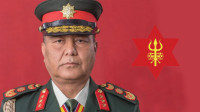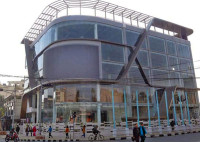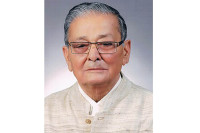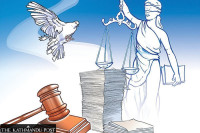National
Rightist Rastriya Prajatantra Party cashes in on people’s frustration with major parties
As the party improves its vote shares, it hopes to fare better in upcoming polls.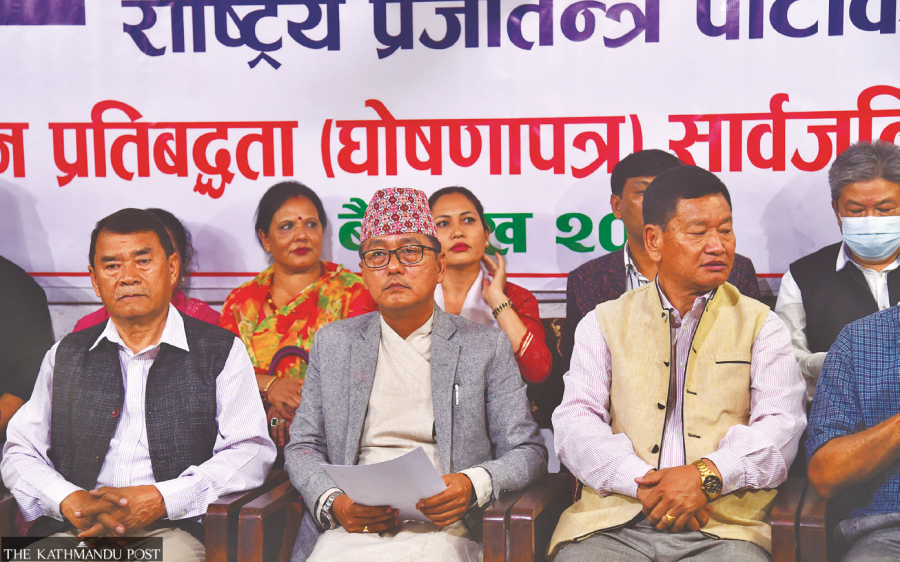
Binod Ghimire
In December last year, Rajendra Lingden pulled off a coup, defeating Kamal Thapa to become the chair of the Rastriya Prajatantra Party (RPP). Two months later, Thapa quit the party to revive the Rastriya Prajatantra Party Nepal.
The Lingden-led RPP still managed to perform significantly better than previous elections, even though Thapa had taken a chunk of leaders with him to RPP Nepal.
The RPP had won mayor in one sub-metropolitan city and chairpersons in four rural municipalities in the 2017 local elections. The party won the deputy mayor post in one municipality and vice-chairpersons in two rural municipalities. Last time, the right wing party had won chairpersons in just 10 wards in different local units.
As the vote count for the local elections held on May 13 completes for all the local units except two, the RPP has made significant gains if its wins in the wards and its share of votes are taken into consideration.
Though the party won in only four units—three municipalities and one rural municipality—it claimed victory in 63 wards. This is the first time the party has won the mayoral post in a municipality in Kathmandu. It has stood second in around a dozen local units, including in Siddharthanagar Municipality, and Kachanakawal and Ruby Valley Rural Municipalities, among others. It has stood third in equal numbers of the local units.
“We had expected an even better result but we are not disappointed. Our performance contesting alone against two alliances shows our bright future ahead,” Mohan Shrestha, chief of the party’s publicity department, told the Post. “Our popular vote has grown significantly compared to the previous federal election.”
The five ruling parties had formed an electoral alliance in one third of the total local units while the CPN-UML had joined hands with Thapa’s Rastriya Prajatantra Party Nepal and Nepal Pariwar Dal.
The Nepali Congress has emerged as the largest party and the UML holds the second position in terms of the number of local government chiefs won. The CPN (Maoist Centre), the party that championed the cause of federalism and secularism, has managed to maintain its political relevance by winning the third largest number of top positions. The biggest loser in this election is perhaps Madhav Nepal’s CPN (Unified Socialist).
Lingden’s party had formed an alliance in just two local units—with the ruling alliance in Damak, the hometown of UML chairperson KP Sharma Oli, and with the UML in Bharatpur Metropolitan City.
The right-wing party garnered close to 385,000 votes based on the votes received by the candidates for the mayor/chairperson. It had fielded candidates for mayor/chairperson positions in 478 local units.
With 630,687 votes under the proportional category in the second Constituent Assembly elections, it had become the fourth largest party. The number of votes decreased to 196,782 in the last federal elections of 2017. It couldn’t even qualify as a national party because it didn’t receive a minimum of three percent of the total votes cast, the threshold set for a party to get the national party status.
Political analysts say the increase in the vote share of the RPP suggests a gradual rise of rightist forces. They say people tend to change the voting pattern if they are not satisfied with the parties they are being governed by.
Meena Vaidya Malla, a professor of political science at the Tribhuvan University, said even in a mature democracy people tend to choose rightist forces if the liberal parties fail to live up to their expectations.
“Rightwing parties like the RPP will rise if the liberal parties don’t mend their ways. People are dynamic and they tend to experiment,” she told the Post. “The rise of the RPP, however, is not a threat to the existing political system.”
Nepal abolished monarchy, turned secular and adopted federalism following the second people’s movement in 2006. Republicanism, secularism and federalism were the major reforms the Constitution of Nepal brought.
People’s frustration with the established parties was visible this time, especially in Kathmandu, Dharan and Dhangadhi, where they voted independent candidates to power discarding the Congress and the UML.
Political experts say though the country witnessed huge political transformation in the last two decades, there has been no change in the way the parties and leaders, who contributed for change, function.
“It is natural for the people to look for change if those they trust fail to perform as per their aspirations,” Ram Krishna Tiwari, chief of the Central Department of Political Science at the Tribhuvan University, told the Post. “It is through the elections they express their desire for changes.”
Lingden’s RPP is the only party that is carrying the agenda of constitutional monarchy at the moment. Reinstatement of Nepal as a Hindu state and scrapping federalism are other agendas the party has been advocating for.
While Thapa’s RPP Nepal advocates for a Hindu state, he has given up the agenda of constitutional monarchy, especially after his loss to Lingden in December. Thapa has accused former king Gyanedra of plotting against him.
RPP leaders say they are working to further consolidate the right-to-the-centre constituencies.
“The party’s performance was on a downward trend after the 2013 Constituent Assembly election,” Sagun Lawati, the party’s spokesperson, told the Post. “But this election has shown an encouraging trend. We will definitely fare better in the upcoming polls that are due later this year.”




 15.12°C Kathmandu
15.12°C Kathmandu
